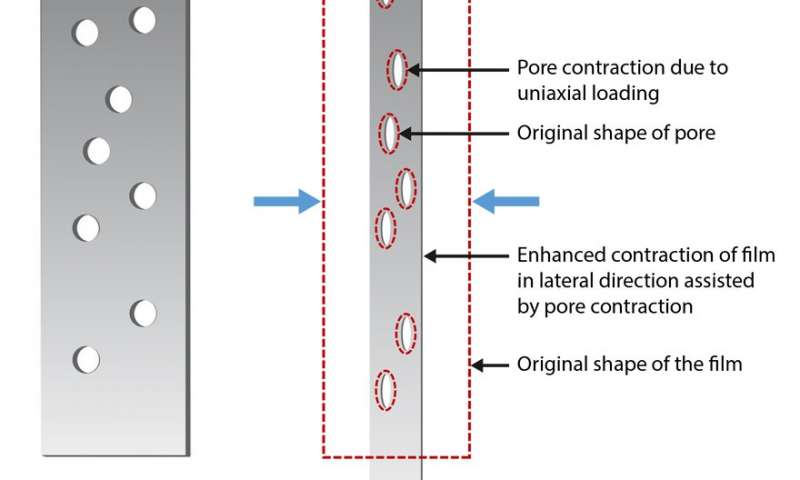Rahul Panat and a team of researchers from CMU, WSU, and UT-El Paso have developed a new 3-D printing technique for manufacturing strain gauges that breaks the Poisson Ratio by 40%.
Have you ever weighed your car at a weighing station on the highway? Have you ever thought about how the deflections in an airplane wing are monitored? Have you ever wondered how engineers monitor the stress and bend of a bridge?
Weighing stations, airplane wings, and bridges have at least one thing in common: strain gauges. Strain gauges are simple devices used to measure strain, or pull, on an object. As you stretch—apply deformation to—the strain gauge, its resistance will change, telling you how much deformation the object is undergoing. And they’re everywhere.
“Anywhere there is deflection of a mechanical system, you will see strain gauges; which is a lot of places!,” says Rahul Panat, an associate professor of mechanical engineering at Carnegie Mellon University. Panat is also affiliated with Carnegie Mellon University’s NextManufacturing Center.
Panat has developed a new 3-D printing technique for manufacturing strain gauges, along with collaborators from Washington State University and the University of Texas at El Paso. This new method significantly improves the sensitivity of strain gauges and increases their capabilities for use in high-temperature applications.
The researchers fabricated this strain gauge using aerosol jet printing, a 3-D printing method that creates a porous film by controlled sintering of nanoparticles that partially coalesce them using heat. When stretched, this porous film—which contains many tiny holes that result from the 3-D printing method, also known as additive manufacturing—is able to contract more than a solid film, the typical form of strain gauges fabricated using traditional manufacturing methods.
“More contraction means more sensitivity,” explains Panat, “so we get a much more sensitive strain gauge by adopting this new manufacturing method, where we print nanoparticles of a material and create this porosity by controlled sintering.”
This new manufacturing method breaks what is known as the Poisson Ratio, the limit to how sensitive a solid strain gauge can be. The Poisson Ratio of a material describes how much a material will contract in one direction when it is stretched in another direction. The maximum Poisson Ratio a solid material can have is about 0.5, according to Panat.
“Because of the porosity of the film, we are seeing an effective Poisson Ratio of approximately 0.7—which means we have about a 40% increase in the lateral contraction for a given deformation of the film,” says Panat. “That makes the strain gauge much more sensitive to measurement.”
In addition to the increased sensitivity of these strain gauges, another advantage Panat found was that such strain sensors are highly suitable for high-temperature applications. Solid strain gauges fabricated using traditional manufacturing techniques are susceptible to error due to the interference of thermal heating, but the porous strain gauges fabricated with this new technique are resistant to this error.
“The reason why a material will show thermal strain is because material naturally expands when it is heated,” says Panat. “In our case, the overall expansion of the porous film because of heat alone is much smaller than if it were a solid film. The films created with this new technique do not expand that much, so we are significantly reducing the error in high-temperature applications.”
Md Taibur Rahman, a postdoctoral researcher at Carnegie Mellon University, also worked on this project. This research, “3-D Printed High Performance Strain Sensors for High Temperature Applications,” was published in the Journal of Applied Physics.

Schematic of the porous film under linear strain showing enhanced lateral contraction (Poisson ratio greater than 0.5). (Image Credit: Carnegie Mellon University College of Engineering)
Filed Under: M2M (machine to machine)




